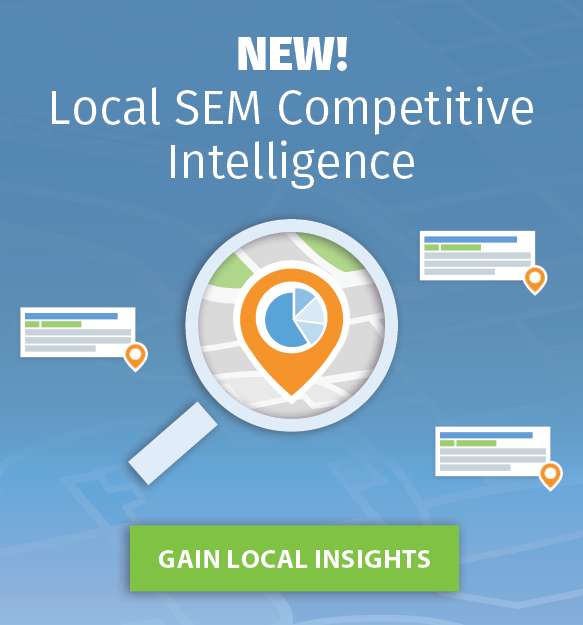
Paid advertising is a polarizing topic. There are some marketers who look at it as somewhat of a Holy Grail among marketing channels.
Put money in, get more money out, then sit back and do nothing.
Another group of marketers scorn it as “outbound” marketing—an in your face, unpleasant means to get attention for your business.
Personally, I take a neutral approach. If it works, I’m all for it; if not, it just wasn’t the right channel for the business.
At this point, I’ve tried paid advertising for various businesses, and I’ve come to understand certain trends where I think PPC advertising makes sense and when it doesn’t. I’ve grouped these into five questions which will help you know if PPC is a channel you should be putting resources into.
Go through each of these points, and if you find yourself saying, “Yes, that’s my business”, you should think strongly about doing paid advertising.
#1: You Have A High Customer Value
Paid acquisition costs money by definition. It can’t be paid in time, like some marketing channels such as content or leaving comments on blogs. This means it’s more feasible when the customer value is high and therefore the cost of acquisition can be higher.
Makes sense, right?
So what’s an example of a low customer value that makes it difficult?
Well, I was reading this AMA the other day about HubStaff, in which the company discussed the channels that didn’t work for them.
HubStaff has a customer value of only $31 per month due to the fact that they have some very low pricing plans, and the channel right at the top of their list of failed attempts was Facebook Ads.
While they did admit to using AdWords from time to time, they also acknowledged that they just don’t do a lot of paid advertising period and focus mostly on inbound marketing.
In software, you usually look for a customer LTV to be at least 3X cost per acquisition (CAC), which means if the average HubStaff customer sticks around for 10 months and is worth around $300, they can only spend $100 to acquire them, making paid advertising a relatively difficult channel with which to be successful.
The opposite example might be a company like Grasshopper. I don’t know Grasshopper’s average monthly customer value, but given that their pricing plans are a lot higher than HubStaff’s, I reckon it’s at least double or around $60+ per month.
Not surprisingly, they wrote how Adwords has been a successful channel for them in this interview on the Groove blog.
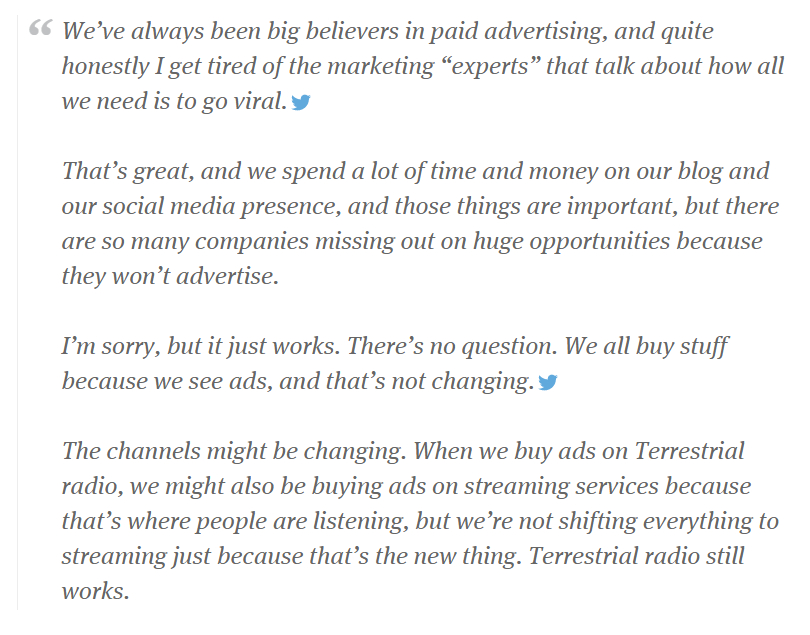
As you can see, the business model is the same, i.e. SaaS, but the difference in customer value makes it successful for one business while not for another.
Question to ask yourself: Is your lifetime value per customer high enough to justify acquiring them through a pay-per-click-channel?
#2: Your Business Is Extremely Targeted, Such As By Location
The concept of inbound marketing is not based around targeting. It’s more aptly defined as creating a web of content so that your targets can find you when they are looking for what you offer.
However, if you have a very targeted group of customers, it can be difficult to find a good inbound channel.
Consider blogger outreach, which is the core marketing channel we preach at NinjaOutreach.
What type of information do we know about blogs?
Well, here’s the Alexa demographic information for my business blog, SelfMadeBusinessman.
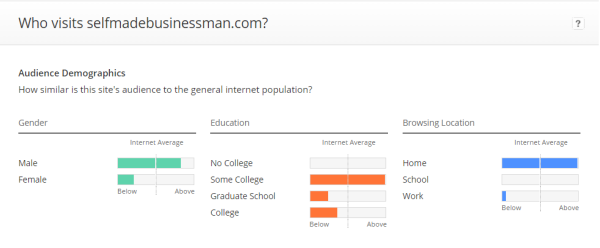
It doesn’t really tell you much does it?
Let’s compare that to Adwords targeting.
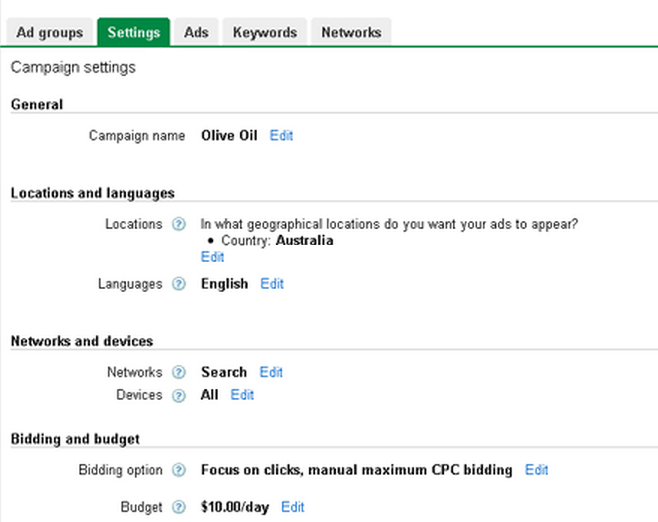
Among other things you can target by:
- Language
- Location
- Device
- Keywords
So, if you’re a mobile app based only in Australia, you’re much better off leveraging the targeting that Adwords gives you than trying to find a suitable list of Australian bloggers who primarily appeal to an audience of mobile users.
It might not be the case that you need such a targeted outreach campaign, but if you do, consider using PPC instead.
Question to ask yourself: Is your business so targeted that you need to rely on the targeting features of Google and Facebook PPC campaigns?
#3: Your Buyer Keywords Have Large Volume And Low Competition
Chances are if you’re reading this article, you’re relatively accustomed to shopping for things online.
However, that’s not the case for everyone.
There are a lot of niches that still haven’t made the move to online shopping, and as a result buyer keywords for those have extremely low volume.
For example, a buyer keyword for NinjaOutreach is “Blogger Outreach Software”.
It gets about 2,000 impressions per month, and that’s not even an exact match. It includes other less valuable keywords like influencer marketing, social analytics, etc.
Unfortunately, while Adwords may be cost effective for us, it isn’t super scalable.
However, there are many niches where the opposite is true, specifically around physical products that people buy online, such as a biometric gun safe (this probably seems like a strange choice, but I used to have a niche site ranking for this keyword).

Although the competition is listed as high, it has a decent search volume of over 10,000, and a relatively modest suggested bid. If you have an eCommerce store that sold gun safes, for example, you should definitely consider PPC.
If you can find a keyword with a high search volume AND low competition, you’re really onto a winner!
Question to ask yourself: Are you in a niche with a high search volume and a low competition for buying-related terms?
#4: You’re Looking for a Scalable, Trackable Channel
We do a lot of inbound marketing for our business on account of the reasons mentioned above.
Although I can see we’re making progress judging by the increases in our traffic and weekly signups, I would hardly call it trackable.
Mostly, I write a lot of posts and appear on a lot of podcasts, and overall, we’re moving in the right direction. People are signing up; I’m just not entirely sure what brought them to us.
True, there is code that you can put in via Google Analytics to track each source, and it works OK.
But it’s nothing like Adwords.

Adwords tells me exactly how much I’m spending and how many conversions that led to. If I know the value of a sign up, it’s a clear yes or no answer as to whether it’s working or not and if I should be scaling up my campaign.
If I want to scale the campaign, I just put more money into it, and I can see the impact of that in terms of impressions and cost per conversion. It’s really that simple.
If you’re doing client work or just have a tight marketing budget where you need to prove results, paid advertising is a great option.
Question to ask yourself: Is it important for your business to have a trackable marketing channel so you know if you’re getting a good return on your ad budget and thereby can scale or shift your budget accordingly?
#5: You Have a Means Of Retargeting
I think the paid advertising strategy that makes the most sense is retargeting, otherwise known as remarketing.
Remarketing is specifically targeting individuals with whom you have some sort of relationship with. This is often a website visitor or perhaps an email subscriber.
Heck, it could even be a current customer (I’ve heard of people doing this as a way to help conversions and keep engagement up).
Regardless, Adwords and other PPC platforms have tutorials on how you can leverage your existing audience to do remarketing.
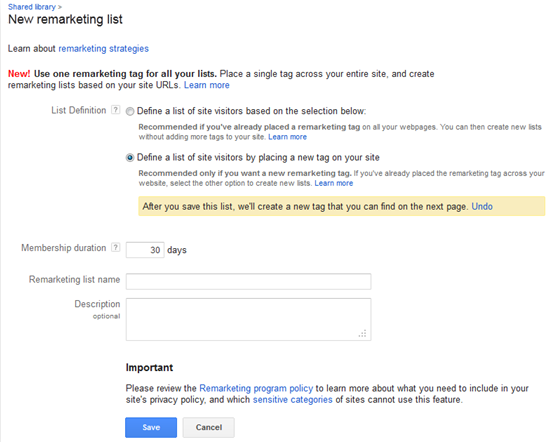
In general, these types of campaigns are known to be very effective, because the prospect has already warmed up to you in one way or another, and we know from marketing 101, it often takes multiple impressions to close a lead (research has shown on average, 5).
Here’s the catch—you need a lot of website visitors in order to make this scalable. Liken this to the search volume question from before—if there aren’t a lot of leads to go off of, then you won’t have a lot of juice to squeeze from the lemon.
While individual cases will vary, I’ve heard you want at least 10,000 visitors per month to make retargeting effective, though I’m sure people are out there doing it with less.
Question to ask yourself: Do you have enough traffic for remarketing to help you cost effectively close more sales?
Conclusion
I don’t know if there is any way to say with certainty that you should be doing paid advertising, but if you found yourself saying ‘Yes’ to at least three out of these five questions, you definitely need to be taking a look.
After that, the question becomes “which platform.” I’ve personally had the most success with AdWords and treat that as a stronger B2B platform than Facebook, but it could be worth trying out both and seeing how the results differ.
Now for the final question: have you answered yes to enough questions to convince yourself to launch a paid advertising campaign?
Author
 David Schneider is the co-founder of NinjaOutreach an all-in-one Prospecting and Outreach tool which was created to streamline the process of connecting with influencers. He can also be found @ninjaoutreach and his business blog SelfMadeBusinessman.
David Schneider is the co-founder of NinjaOutreach an all-in-one Prospecting and Outreach tool which was created to streamline the process of connecting with influencers. He can also be found @ninjaoutreach and his business blog SelfMadeBusinessman.
